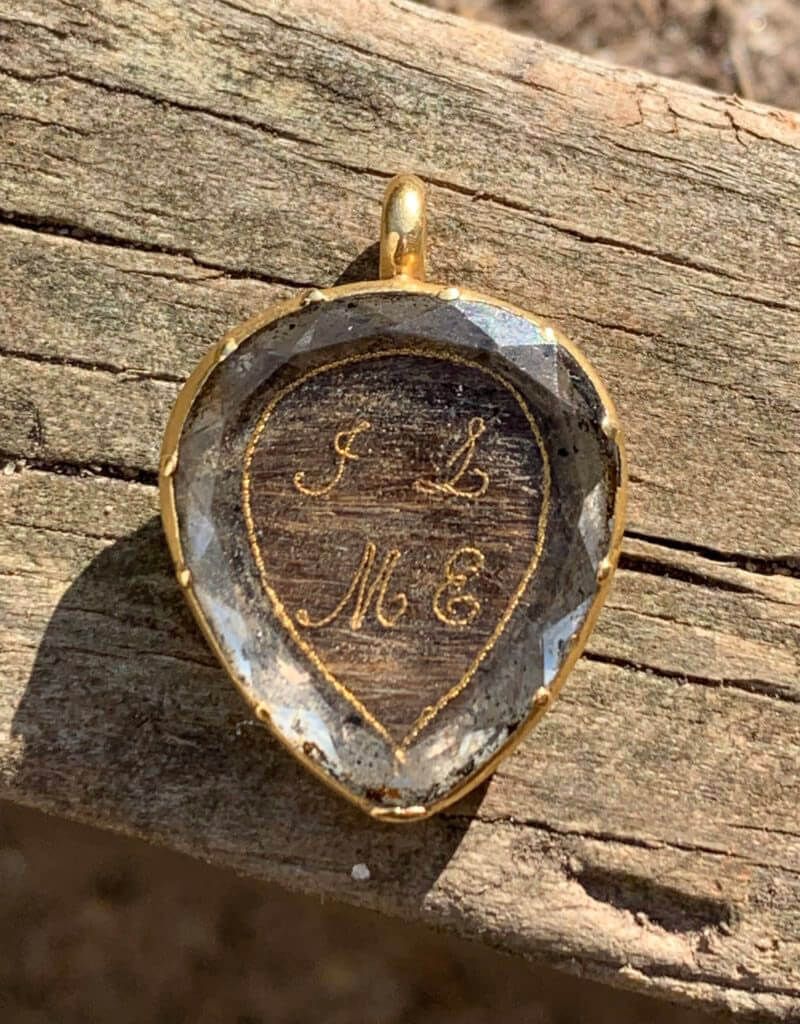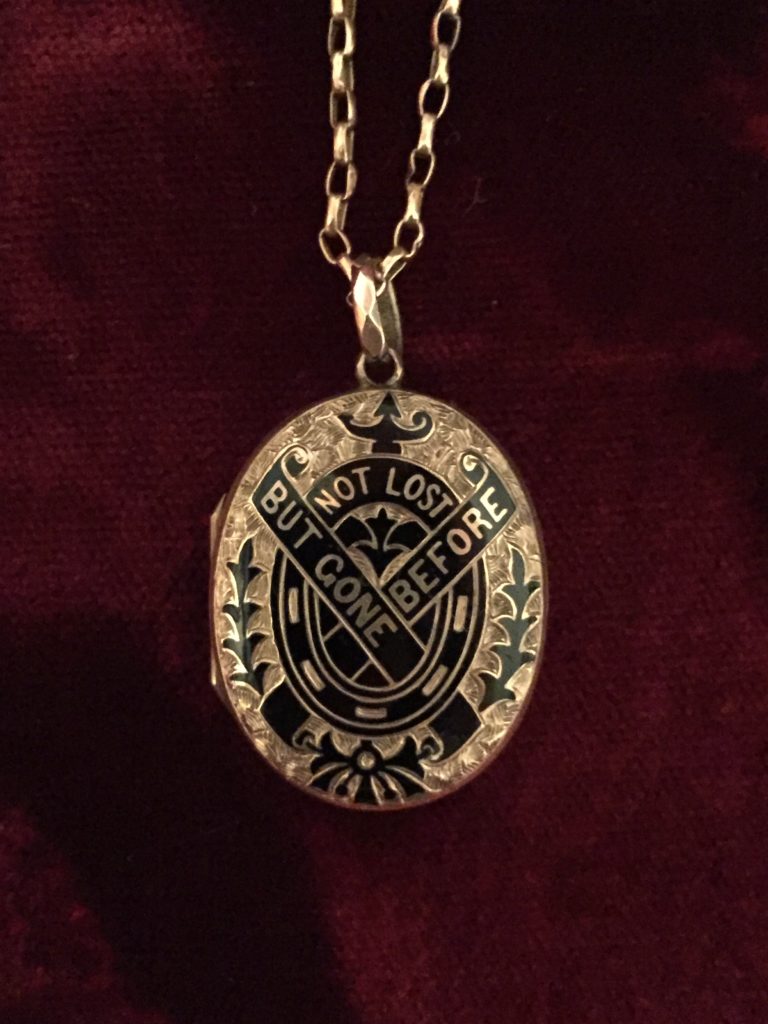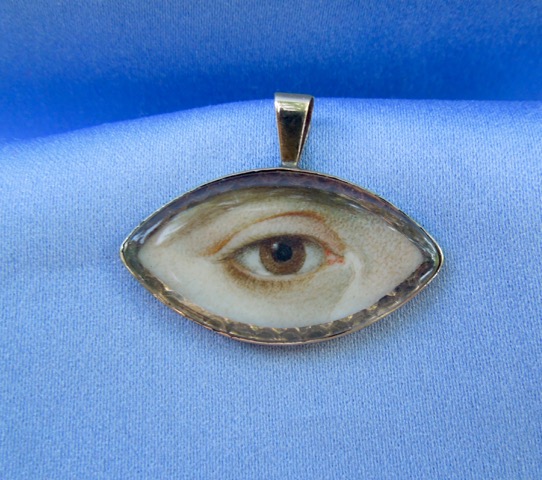Jet Necklace and Locket
Typical of the second half of the 19th Century, jet and its imitations of vulcanite, bakelite and French Jet gained popularity, along with cannel coal and bog oak, facilitated a growing demand. Please read the below articles for more on the rise and the importance of these materials.
Their popularity in fashion in the second half of the 19th Century cannot be denied, as it flourished in mainstream society. This was not a mourning imposition in society, as has been popularised by the post mourning period of Queen Victoria’s life (1861 onwards), but it was simply fashionable. Much of the jet jewellery that was produced was for fashion or sentimental reasons, rather than being directly for a mourning purpose.
Jet was presented to the public at the Great Exhibition of 1851 and its popularity grew exponentially, facing almost immediate Royal patronage from France, Bavaria and of course, England. Thomas Andrews was the ‘jet ornament manufacturer to HM the Queen’ from 1850, and this would be a most prodigious position to hold, as upon Albert’s death in 1861, Queen Victoria only allowed jet jewellery to be worn at court. Society followed on from court etiquette and mourning fashion and culture swiftly became part of mainstream culture.
By the 1870s, the annual turnover of the Whitby jet industry was said to be over one hundred thousand pounds, with a jet craftsperson earning between three and four pounds a week. From 1832, there were only two shops employing twenty-five people to 1872, where two hundred shops employing fifteen hundred women, men and children, taking over the landscape of Whitby. Development of machinery, such as the lathe, also helped to facilitate the growth of jet production meeting the high public demand for jet pieces. However, demand was so high that soft jet was imported from Spain and France, mainly for beading (as previously mentioned, soft jet tended to crack and many surviving pieces reflect this today), giving the jet trade what was considered to be a ‘bad name’, hence the attempt in 1890 to trademark ‘Whitby’ as a quality of jet. Jet was also seeing great competition in lesser-quality imitations which were far cheaper and by 1936, only five craftsmen were left. By 1958, the last Victorian trained jet carver had passed on.
But was it just the competition of imitation jet that started its decline? The entire mourning industry was in a decline from the mid 1880s – an entire generation of a culture with once fluid fashion changes had been living under the shadow of mainstream mourning culture from 1861, due mostly to a queen perpetually in mourning. By 1887, for Victoria’s golden jubilee, she had started to lessen the mourning restrictions and re-emerge in public, but there was even a cultural shift that had begun with women who lived as the centre of household mourning starting to rebel against the older ways. Style had remained largely consistent with little movement since the 1860s, though women’s clothing had lost the heavier crinolines, bold mourning jewels remained bold and prominent. This female paradigm shift had started to become an outward rebellion, with some women even wearing their veils backwards as an act of defiance. The Art Nouveau movement emerged as a breath of fresh air, with its opulent, organic, styles, using nature as its dominant motif, rather than retroactively mining the past for revival styles. Jet was not conducive to this new art movement and did not adapt. Black stones used as a material following this period in Art Deco were often onyx or glass, which became, and remains, popular to this day.
Jet was a wonderful material for use in mourning, obviously for its black nature and how that relates to the 19th century stages of mourning. First mourning lasted one year and a day, outdoor garments for this would be shown by the plainness and amount of crape, jet jewellery was permitted. After one year and a day, Second stage was introduced. This involved less crape and its application to bonnets and dresses became more elaborate. It was frowned upon if this period was entered into too quickly and it lasted nine months in all. The Third stage (or Ordinary stage), introduced after twenty-one months, involves the omission of crape, inclusion of black silk trimmed with jet, black ribbon and embroidery or lace were permitted. Post 1860, soft mauves, violet, pansy, lilac, scabious and heliotrope were acceptable in half mourning. This period lasted three months. The English Woman’s Domestic Magazine stated that ‘many widows never put on their colours again’ and this was quite a statement for the identity of the woman, which was held under the veil of mourning and family symbolism for the rest of her life. Hats, shawls, mantles, gloves, shoes, fans all changed during mid century, and pagoda sleeves from 1850-70 were fashionable, designed to be stitched to the outer sleeve to cover modesty from the lower arm and wrist. Wide skirts from the 1850s-70s, tie back fashions of the late 1870s and the ‘S-bend’ look of the early 1900s all were adapted to mourning fashion, without a clear definition of difference between them. Throughout the post 1880s decline, in the 1890s, women would wear their veils at the back of the head only, showing hair beneath bonnets at the front for first stage mourning. This defiance was quite bold and marked a large turning point for mourning structure.
One thing that is important to note is that jet wasn’t simply a mourning material, which is often a common misconception. It was another jewellery material and quite fashionable, hence giving tokens made from jet doesn’t in any way denote death. Often its black nature and use in early stage mourning gives the impression that it automatically defaults to death. However, brooches from the 1870s, pendants, lockets, trim, beading, necklaces and personalised mementos (such as pins) are quite commonly found as love tokens and items held in high fashion, with only a small percent being used directly for mourning. Jet was also used as a secondary material in many rings, such as jet beading surrounding a ring’s hair memento, creating wonderful embellishments. The ability for jet to be highly polished made it a lustrous and attractive material.
Further Reading
> A History of Jet
> Bakelite
> Vulcanite
> Bog Oak
> French Jet and Vauxhall Glass








